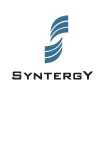Content Server Survives Hit by Meteor
On September 8th, 2014 a meteor hit the earth near Managua, Nicaragua. It left a crater 16 feet deep and 78 feet wide. This meteor did not hit a Content Server but if it did you could be assured that it would not be destroyed. The first thing to understand is that Content Server is an organization of data managed by a software application. This application is typically run on one or more servers located at a single site. Now if a meteor were to hit this site the building and the servers would be destroyed. However, the data and the application can survive!
Except for the people that no longer have network access, it is quite possible the organization running the damaged Content Server will not even notice that the original Content Server no longer exists. This is made possible by the capabilities of Replicator, the only true replication solution available to the Content Server world. With the Replicator module installed, data is automatically replicated to one or more sites around the world. If the primary Content Server goes off line the users are automatically redirected to one of the replicated Content Servers in a location unaffected by the meteor hit.
Replication of information is critical to businesses which must maintain uninterrupted network availability and mission-critical applications in their normal operating conditions. Every minute that networks or applications are unavailable has a very real cost associated. If replication tools are used to synchronize files, network operators can re-route users to a surviving server, and business operations can continue with minimal disruption.
Every organization needs to have a plan for when a disaster hits. Since no one can predict the future we must plan for different scenarios and make sure the data is available as required. For most organizations that means backing up their data and storing it in offsite so that it can be restored to a location that survives the disaster.
This process can be quite expensive when you figure in all of the costs. Typical legacy backup investments have a lot of overhead: Disk systems, tapes, enclosures, drives, libraries, offsite tape storage, time spent managing tape and storing the data offsite, power, cooling, salaries, etc. This adds up to a major expense in most cases. If data is not easily available to move offsite such as a ship at sea, a remote mining operation or an oil platform at sea the traditional methods represent increased risk. Replication can greatly reduce these costs and reduce the risk at remote sites because the process is done automatically. The transportation, storage and maintenance costs through replication will typically be much less costly than the traditional manual, labor intensive method.
The restoration process of a replicated backup can be as simple as setting a switch to the replicated server. Instead of waiting for a lengthy restore of a new server from backups, users would seamlessly access a backup server without even knowing the primary server has gone down.
There are other situations where Replicator can provide a valuable service to Content Server organizations. Many organizations rely heavily on service-level agreements. When a server crashes it may affect an organization's ability to meet an SLA, especially if there are time requirements involved. Organizations using replication as their data backup approach can restore services in minutes vs. hours or days with a traditional restore and the cost savings is typically significant.
Finally, replication can greatly enhance an organization's ability to meet compliance, legal precedents, and corporate governance rules. Organizations keep data around as a matter of internal policy or corporate governance. There are also many regulations, such as Sarbanes Oxley, that dictate retention policies. Trying to meet these requirements with a traditional tape backup system can get very expensive and complex depending on how many systems you have and how long you are required to maintain data. Replication can greatly simplify this process by storing data instantly in a method that is easy to retrieve. Consider the comparison of searching through years of tape or disk vs. searching a Content Server site containing archived data.
Syntergy has recently seen quite a large interest in the Replicator product because it provides so much efficiency in content management. To see if it is a good fit for your organization we encourage you to contact Syntergy by email info@syntergy.com or call Martin Black at (561) 483-2020 or visit our website www.syntergy.com

